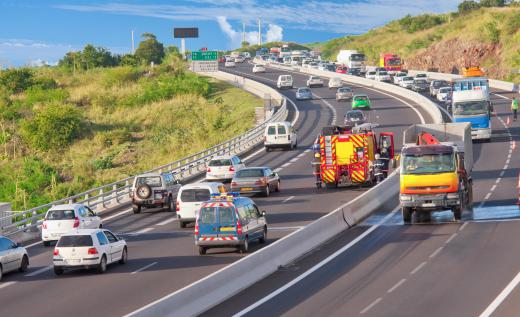A traffic cone is a simple device used to help in the control of the flow of traffic. They have been in use for approximately as long as there have been major motor highways. Cones come in a variety of sizes and shapes. Some are used to direct traffic around construction projects or major events. Other, smaller varieties may be carried by motorists for use if a breakdown requires a stop by the side of a busy highway.
Major motor highways were first introduced in the United States during the first decades of the 20th century. At the same time, automobiles began to be produced in large numbers. These two developments, taken together, led to the development of devices to aid in the control and routing of traffic.

The traffic cone was developed in the United States on the eve of the First World War. These devices were originally made of concrete, which gave motorists a certain incentive to take traffic warnings seriously. Such early cement cones were inconvenient, however.
Typical modern traffic cones are made of plastic. Orange cones are the most common, but other bright neon colors are also used. As a rule of thumb, any color that will catch the eye of a passing motorist will serve. Many traffic cones have heavy rubber bases, which give them the ability to remain upright even in a heavy rain. Cones typically stack easily, and a large number can be stored in a small space.

Highway departments throughout the United States and in many other nations make use of traffic cones to divert traffic around construction. Cones are most often used for smaller diversions, as they are more prone to loss, theft, or damage than are larger and sturdier traffic management devices. They are also smaller than many other devices and are thus less helpful when directing a large volume of traffic traveling at high speeds.
Night work is common in large metropolitan areas, where daytime work would cause whole cities to grind to a halt. This type of construction poses additional challenges, however, and a special type of traffic cone is often used for traffic management around these sites. Reflective strips or collars can be fitted to ordinary traffic cones.
Lighted models of traffic cone are available as well. This variety typically includes a powerful internal light, which enables the cone to be seen easily at night. Such cones are also generally fitted with reflectors to maximize visibility.
Ordinary motorists, especially truckers, also make use of traffic cones. In the event of a breakdown, it may not be possible to exit from a freeway. When this is the case, cones, flares, or safety triangles can be employed to warn and divert traffic.
